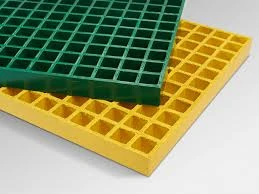loading...
- No. 9, Xingyuan South Street, Dongwaihuan Road, Zaoqiang County, Hengshui, Hebei, China
- admin@zjcomposites.com
- +86 15097380338
- Welcome to visit our website!
Advantages of Using Fiberglass Reinforcement Bars in Construction Projects
Fiberglass Reinforcement Bar A Revolutionary Material in Construction
In the realm of construction materials, fiberglass reinforcement bars, commonly known as GFRP (Glass Fiber Reinforced Polymer) bars, are emerging as a revolutionary alternative to traditional steel rebar. As the construction industry evolves, the demand for innovative materials that offer enhanced durability, corrosion resistance, and lightweight properties has led to the increasing popularity of GFRP bars.
Fiberglass Reinforcement Bar A Revolutionary Material in Construction
Another compelling benefit of GFRP bars is their lightweight nature. Weighing significantly less than steel, fiberglass reinforcement bars allow for easier handling, transportation, and installation. This reduction in weight not only decreases labor costs but also enables the construction of more complex structures without compromising strength. Builders can easily maneuver these bars, reducing the risk of injury during installation and lowering overall project timelines.
fibreglass reinforcement bar

In addition to their physical properties, GFRP bars offer excellent tensile strength, which is crucial in load-bearing applications. Their ability to absorb and distribute loads efficiently makes them a dependable choice for various construction projects, including bridges, parking garages, and high-rise buildings. Moreover, the non-magnetic and non-conductive nature of fiberglass reinforcement bars adds to their versatility, making them ideal for use in environments where electromagnetic interference is a concern, such as hospitals and data centers.
Environmental considerations are also an essential aspect of fiberglass reinforcement bars. With increasing awareness of sustainability in construction, GFRP bars present a more eco-friendly option compared to traditional materials. They can be manufactured using recycled materials and can also be recycled themselves at the end of their lifecycle. This aligns with the growing trend of sustainable building practices, minimizing the environmental impact of construction projects.
Despite these advantages, it is essential to acknowledge that fiberglass reinforcement bars can be more expensive upfront compared to steel rebar. However, their long-term benefits, including reduced maintenance costs and extended lifespan, often outweigh the initial investment. As the construction industry continues to seek innovative solutions and materials, GFRP bars are poised to become an integral component in modern infrastructure development.
In conclusion, fiberglass reinforcement bars represent a significant advancement in construction materials. With their unique properties, including corrosion resistance, lightweight design, and sustainability, GFRP bars offer a compelling alternative to traditional steel rebar. As the industry embraces these innovations, the future of construction is sure to be stronger, more efficient, and more environmentally friendly.
-
The Rise of FRP Profiles: Strong, Lightweight, and Built to LastNewsJul.14,2025
-
SMC Panel Tanks: A Modern Water Storage Solution for All EnvironmentsNewsJul.14,2025
-
GRP Grating: A Modern Solution for Safe and Durable Access SystemsNewsJul.14,2025
-
Galvanized Steel Water Tanks: Durable, Reliable, and Ready for UseNewsJul.14,2025
-
FRP Mini Mesh Grating: The Safer, Smarter Flooring SolutionNewsJul.14,2025
-
Exploring FRP Vessels: Durable Solutions for Modern Fluid HandlingNewsJul.14,2025
-
GRP Structures: The Future of Lightweight, High-Performance EngineeringNewsJun.20,2025
